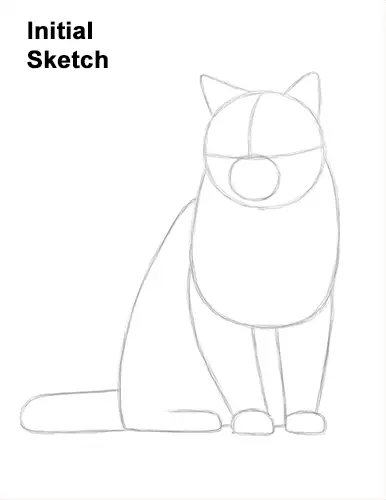
That's it for the guides! From this point on, press harder with your pencil for a more defined drawing.
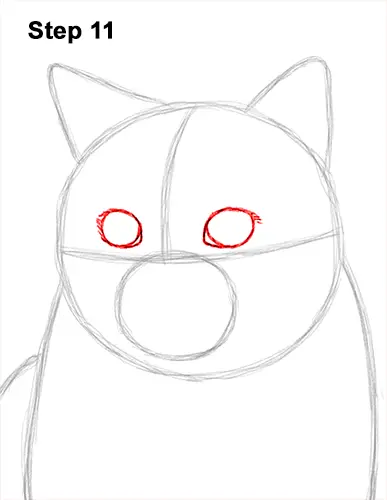
Step 11: Lightly sketch the eyes inside the head as two small circles. Use the initial lines as guides for the placement and size of the British shorthair's eyes. When you get the position and size of the eyes right, darken the lines. Draw a small, angled line on the inner edge of each eye for the corners of the eyes. Draw a few short strokes on the top outer edges of the cat's eyes for a bit of fur.
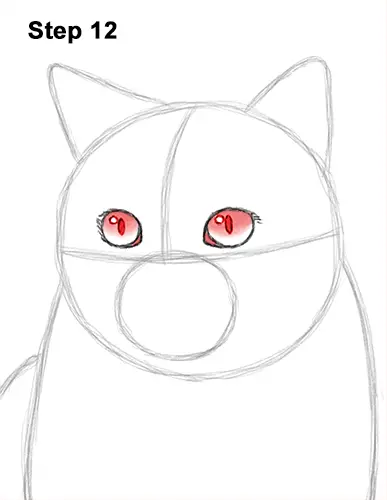
Step 12: Inside each eye, off to the side, draw a tiny circle to represent glare or highlight. In the middle of each eye, draw a thin slit and shade it in for the cat's pupils. You can also use big circles for dilated pupils. Don't overlap the tiny glare circles as you shade. Add a bit of light value on the top part of the eyes for detail on the irises.
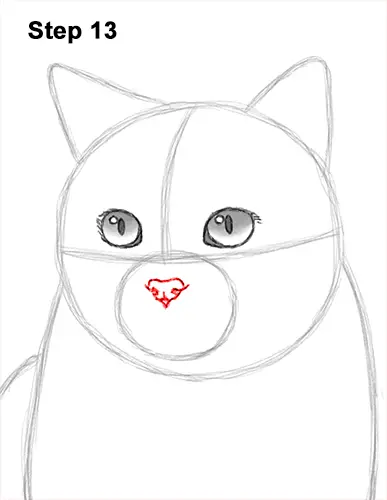
Step 13: Inside the muzzle, near the top, lightly sketch a small triangle for the British shorthair's nose. When you get the position, size and shape right, darken the top edge but make it wavier. As you darken the sides, curve them inward to create the nostrils. Darken the bottom part but make it rounder. Draw an extra pointy corner at the bottom.
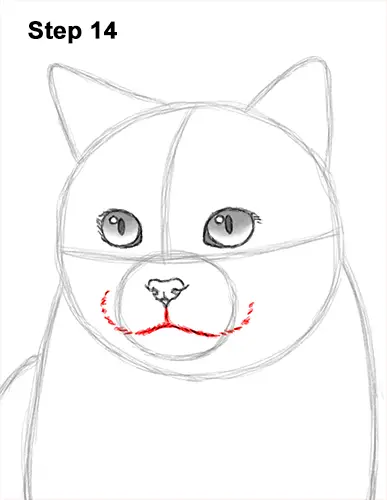
Step 14: Under the nose, lightly sketch a line that curves to the right for the first part of the mouth. Use the initial circle as a guide for the length of the mouth. To the right, sketch another curved line to finish the cat's mouth. The ends of the lines should extend outside the circle. When you get the shapes right, darken the lines. Use a series of short strokes along the sketched path of the mouth for a furry texture.







